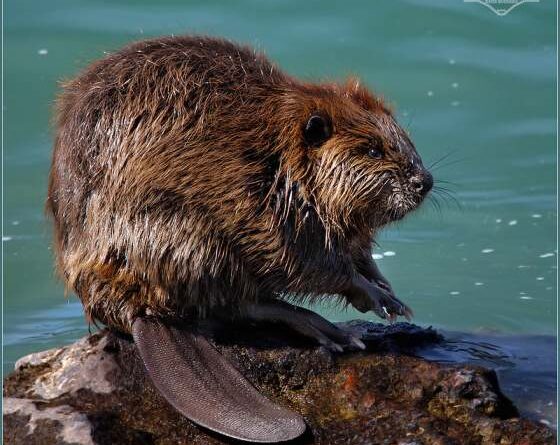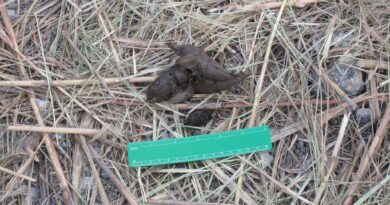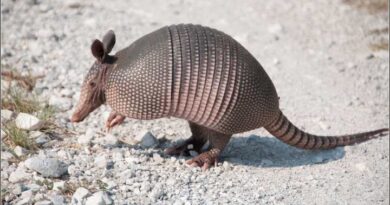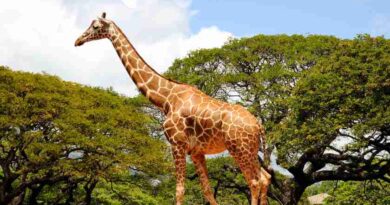Beaver
The beaver appears to be a large rat with a flat tail at first glance. When you first meet one, it doesn’t appear to be that fascinating. It is hardly one of nature’s beauties, with its dull brown colour and wet, unkempt fur. We may be forgiven for ignoring the animal if we saw it in a zoo cage. However, this would be a grave error, as the beaver is one of the most amazing species on the planet. This is due to what it does rather than what it is.
The beaver is the animal world’s master builder. It is not hyperbole to argue that it has altered entire landscapes. It is also true that, aside from man, it has constructed the world’s largest structures. One of them measured about a half-mile in length.
It cuts down forests, creates dams, clears waterways, builds dwellings, and stocks larders. Its dams have resulted in the creation of lakes, the prevention of floods, and the alteration of flora. It is one of the busiest animals on the earth, as well as one of the most hunted due to its excellent fur. What is it about the beaver that makes him such a hard worker? Why not unwind and enjoy the beautiful spring weather or the hot summer sun? Why is it always “beavering around”?
The answer is because it lives in the northern areas’ frigid rivers and lakes, where surviving the winter is difficult. Some creatures simply burrow deep into the ground and sleep until the weather warms up again. This is something that the beaver does not do. Instead, it makes a cosy den for itself, complete with a well-stocked pantry nearby, to stave off the severe weather. Because the water levels fluctuate, this isn’t as simple as it sounds. The beaver’s home, or lodge, cannot be flooded or left high and dry. It’s easier to comprehend how the animal deals with this issue if you start at the beginning, when a young beaver leaves the family house and sets out on its own.
The beaver’s youth ends when it reaches the age of two, and it leaves its parents for good. It may swim for miles in search of the perfect area to call its own. It digs a hole in the mud of the riverbank once it arrives. The tunnel’s entrance hole is submerged, and as the animal digs, the tunnel slopes up higher and higher. The animal extends the corridor into a den once it has risen above the river’s water level. The beaver can eat, sleep, and eventually breed in its den, but it requires a lot of cleaning and repair. For example, if the river’s water level rises, the den will quickly get flooded. The beaver solves the problem by scraping mud from the den’s roof. The mud settles on the floor, the floor rises, and the flooding is no longer an issue.
This is a simple way to keep the den from flooding, but if the water level continues to rise, the problem will resurface. The beaver resumes scraping the ceiling and allowing it to fall to the floor once more. This may occur multiple times, but eventually the den rises to the point that its ceiling breaches through the earth’s surface on the riverbank. The beaver’s den now has an open top, making him easy prey for any passing hunter. The answer is to build a new roof, one so large and thick that even a hungry bear will struggle to climb through it. Sticks, branches, stones, and mud make up the new roof. From afar, it appears to be a circular Pyramid. The beaver’s cosy den is protected from the winter elements: freezing rain, snowstorms, and howling winds. The hard-working beaver can keep up with the rising water level by raising the height of the den inside the “lodge.” The water can flood to the point where it fully surrounds the lodge in certain circumstances. The mound of sticks and stones now appears to have been constructed in the middle of a pond rather than along the side of a river. This helps to protect it even more against roving killers. If the water level lowers instead of rising, an entirely different problem arises. The entrance to the beaver’s burrow will be visible on the dried-up riverbank if this occurs. It is on display to any hungry animal roaming along the river, rather than being carefully hidden beneath the water. It is also vulnerable to blizzards in the winter. As a result, the water level must not fall below the entrance in any way. It’s a life or death matter.
The beaver’s way to this problem is incredible. It begins construction on a massive dam. The flow of water in the river is slowed by this obstruction. The river widens out sideways as it slows and its level rises, sometimes forming a little lake. The beavers can precisely alter the dam to keep the water level exactly where they want it, not too high or too low. When the rains fall, the dam can be slightly opened. When the drought hits, the dam can be tightened even further.
The beaver must cut down trees and drag them into place in order to build the dam. This is strenuous job, but the beaver has excellent teeth with which to complete it. Its front teeth are formed like chisels and are long. They never stop growing, unlike human teeth. They re-grow as they are worn down by the constant nibbling, ensuring that they are always the proper length for the job. The beaver chooses a tree near the riverbank, usually a small one with a trunk about 7 to 20 centimetres in diameter, and begins nibbling at it.
The animal’s tongue is pulled back into its neck, fully obstructing it and preventing any wood particles from passing through. It gnaws away at the tree trunk while travelling around it. A 7-centimetre tree takes roughly five minutes to cut down. The tree then makes a creaking sound, indicating that it is about to fall over. The beaver makes a mad sprint to get out of the way before the tree falls to the ground as soon as it hears this sound. It is quite rare that it is too slow and is squished flat by the tree. It almost always appears to know which way the trunk will fall.
After the tree has been felled, the beaver begins to cut it up into sections. The thicker the tree, the shorter these sections are. These logs are then pulled or carried away from the dam site. The teeth are carried with little branches. Branches that are heavier are dragged into the water and floated along. Tree trunks that are more than 10 cm thick are left where they fall, with just their little side branches being used.
On land, the beaver has a peculiar way of transporting small objects. It stands on its hind legs and rears up. It accomplishes this while carrying its load in its front foot and mouth. (Incidentally, it adopts the same erect stance when carrying its young.) When the beaver gets at the dam with its prize, it pushes and shoves, pulls and tugs until the new branch is rammed into the existing mass. Mud and stones are added, and the dam soon takes on the appearance of a massive wall. Some dams are so sturdy that men have been able to ride their horses across rivers to cross them. From end to end, one was 700 metres long.
As the seasons have changed, large dams have been used again and again in some regions. When the old beavers died, young beavers arrived and added to the dams. A dam was found to be over a thousand years old in one occasion. It looked like a beaver’s rendition of China’s Great Wall. Beavers, like humans, learn all of their “skills” from their parents and pass them on to their offspring. They have the appearance of being extremely clever creatures. They are unquestionably clever, yet most of what they do comes effortlessly to them and does not require learning.
Young beavers born in a zoo were separated from their parents and placed in a new zoo-paddock with a stream as part of an experiment. They’d never seen a beaver pond before, but they started about building a lodge and a dam right away. They accomplished it without making any mistakes or second-guessing themselves, demonstrating that their building skills were innate rather than learned.
The beaver is definitely a remarkable animal, and its natural habitat is currently properly protected. It wasn’t always like this. Human hunters found easy game in the far north when they first arrived. Millions of animals were killed for their fur. Both North American and European beavers were nearly extinct, but hunting was finally prohibited, and the few survivors were left alone.
These lucky ones quickly began reproducing in great numbers and re-spreading across their ancestral lands. They were eventually successful enough, and there were enough of them, that the hunters were allowed to return.
This time, however, the hunting has been strictly regulated, and only a certain number of beavers can be killed for the fur trade each year. At long last, their future is assured. Their dams can now be seen throughout the northern areas, and their incredible engineering exploits are once again changing the riverfront scenery.



